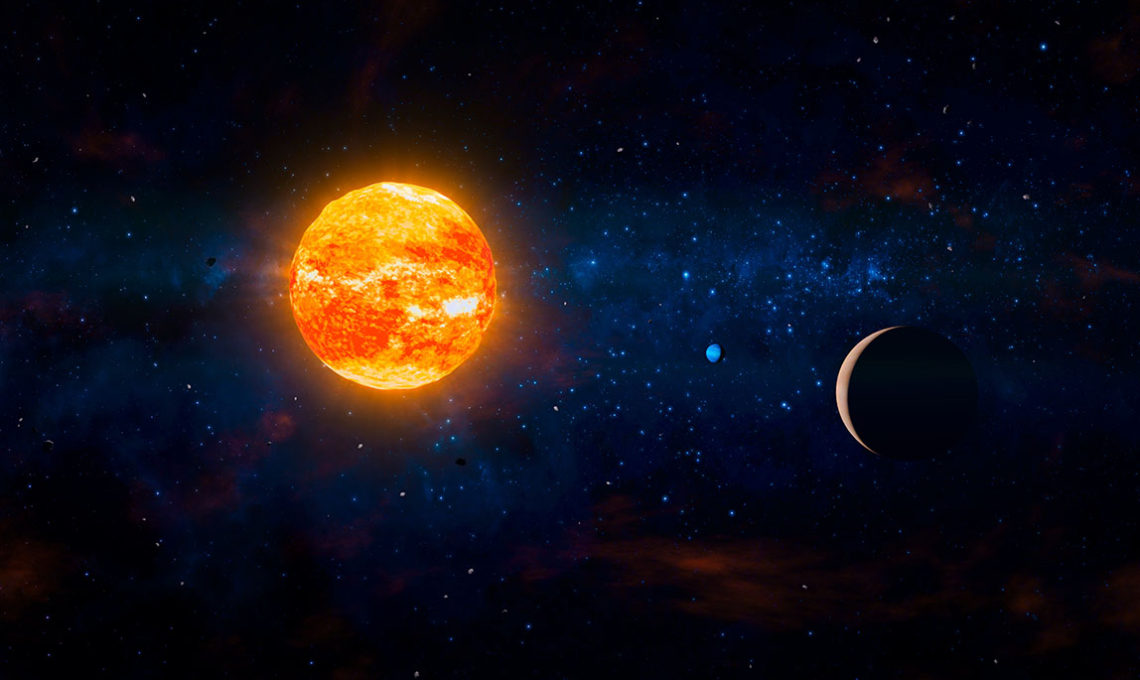
Exploring how stars work
Here on Earth, Lithium is used in electric cars, giant solar-storage batteries, medicine, mobile phone batteries and heat resistant glass, but little is known about how the element is created in the universe. And to delve into that mystery, we need to look at the stars.
“Almost every element in the universe is created by stars,” explains Dr Simon Campbell, an Australian Research Council Future Fellow at the Monash University School of Physics and Astronomy. “Everything except Hydrogen and Helium (and a little bit of Lithium) came from stars. To understand the universe, you have to understand how stars work.”
Understanding how stars create and destroy elements as they evolve helps us understand the origin of the material that makes up galaxies, planets such Earth, and even ourselves.
“There’s a mysterious group of stars – about 1% of red giants contain huge amounts of Lithium, but we don’t know where the Lithium comes from,” said Simon.
To investigate this mysterious group of Lithium-producing stars, Simon teamed up with observers in China and India and the Australian stellar survey known as GALAH (Galactic Archaeology with the Hermes spectrograph), which uses the largest optical telescope in Australia, the Australian Astronomical Telescope, located at the Siding Springs Observatory near Coonabarabran, NSW.
Computing models of red giant stars
Simon’s contribution to the research involved computing detailed models of red giant stars, which he analysed using the Australian Research Data Commons (ARDC) Nectar Research Cloud.
His models show that our current theories about how stars evolve do not predict this huge Lithium production at all. In addition, on analysing the observational data more, they found that actually all the stars were producing Lithium, in varying amounts. Simon’s models could not explain this either. It also meant that our own star – the Sun – would produce Lithium in the future.
The team published a paper in Nature Astronomy in July 2020 describing their observations and models, and called for theorists to step up to try and explain why theories had not predicted that Lithium could be produced through stellar evolution.
The theorists jumped at the challenge. Immediately after the paper was published, two papers were published from Japan and the US on the theory behind how stars could produce Lithium as they evolve through this phase.
“It’s a hot topic right now,” said Simon, “There’s a lot of work to be done on the theory side to explain it.”
“Since the newly created Lithium will end up being blown off the star in stellar winds, it will also help us understand how much these stars enrich our Galaxy with Lithium, and eventually planets like Earth.”
Simon began his work on investigating Lithium and stars in 2019, modelling a cluster of lithium-producing stars on Nectar to follow their nucleosynthesis – the creation of elements on the periodic table.
“My work is very computational,” said Simon, “A laptop computer can only do so much. I use the Pawsey Supercomputer Magnus at one end of the scale and my laptop at the other end of the scale. In between is where I need more than a laptop but less than Pawsey.”
That’s where the ARDC Nectar Research Cloud plays a key role in Simon’s research. Nectar is Australia’s national research cloud, providing Australia’s research community with on-demand computing infrastructure and software.
Utilising national research infrastructure
It’s Australia’s interconnected national research infrastructure that makes Simon’s research possible.
Simon conducts complex simulations on the Magnus supercomputer at the Pawsey Supercomputing Centre in Perth, transfers the gigantic data files via Australia’s high speed research network AARNet to his Monash University ‘Vault’ storage facility (supported by the Monash eResearch Centre), and then accesses and his 100 terabytes of data via the ARDC Nectar Research Cloud.
“The really powerful thing about Nectar is that I can mount the saved data from the supercomputer via my Vault storage and analyse it on my Nectar machines,” said Simon.
The Vault was designed to allow users to seamlessly and securely transfer data to and from the peak supercomputing facilities over AARNet, and then mount their Vault storage to analyse that data on Nectar.
This is an excerpt of a story authored by and first published on the Australian Research Data Commons (ARDC) website:
For more information please contact our contributor(s):

